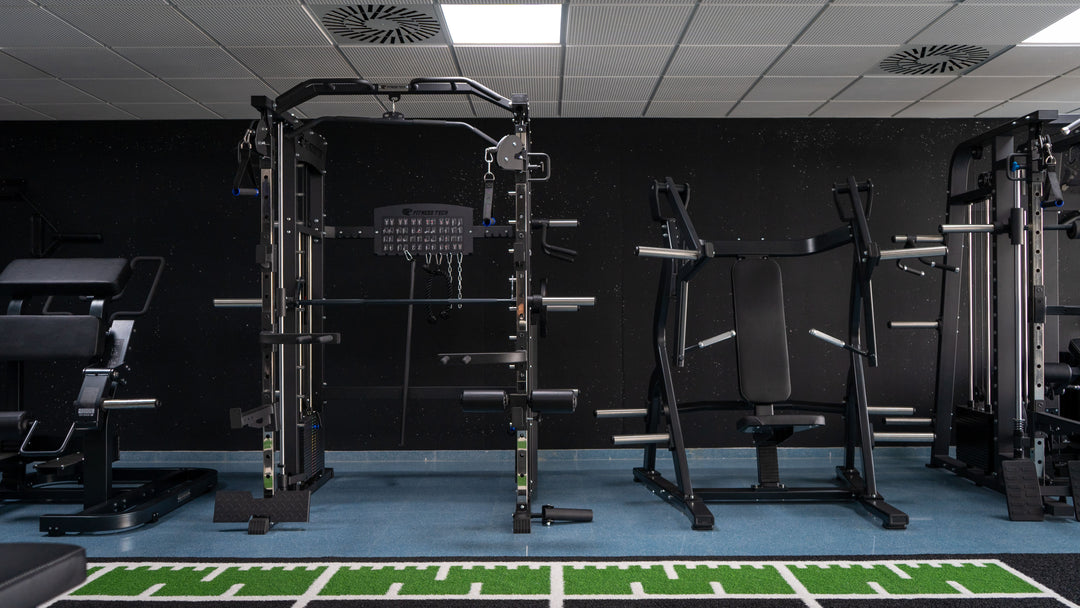This is how you will gain muscle mass: The definitive answer
How to gain muscle mass?
When it comes to gaining muscle mass, there are several key factors to consider, from proper training to balanced nutrition and restorative rest. Although this topic has been covered in depth many times, here we offer you a practical summary with all the essential information in one place.
How many days a week should I train?
The first step is to determine how many days you can dedicate to the gym. This will allow you to choose a routine that fits your availability and ensure it is realistic and sustainable over time.
It is better to commit to a four-day routine and stick to it, than to plan a five-day routine and not complete it consistently.
What is the most suitable training routine?
Once you know how many days you can train, it's time to select a routine that fits your needs. Here are some options:
- Three days a week: Opt for a full-body routine or a hybrid that combines full-body and upper-lower body.
- Four days a week: An upper-lower body routine is ideal, although you can adapt it to prioritize upper body or legs, depending on your goals.
- Five days a week: Layne Norton's PHAT method is very effective, or you can split workouts between upper-lower body and specific sessions for muscle groups (chest-triceps, back-biceps, and legs).
- Six days a week: A push-pull-legs routine or a weider with frequency 2 is a great choice. However, from here we do not recommend opting for a routine of this kind, as muscle recovery could be severely affected.
How often should I work each muscle group?
Training each muscle group twice a week (frequency 2) is usually the most effective. According to studies, this frequency offers a good balance between performance and recovery. Although results can also be achieved with frequency 1 or 3, frequency 2 is a safe option for most people.
How many sets should I do per muscle group?
For someone just starting out, a good range is between 12 and 22 sets per week per muscle group. If you train with frequency 2, distribute these sets evenly across each session.
How many repetitions are necessary in each exercise?
The optimal repetition range to gain muscle mass is between 6 and 20. For basic and multi-joint exercises, work with lower ranges (around 6 repetitions). In isolation exercises, focus on higher ranges, close to 20 repetitions.
How long should you rest between sets?
Rest enough to perform well in the next set, which generally means at least 2 minutes between sets. More intense exercises require longer rests, while lighter exercises or those with high repetitions can have shorter rests.
What cadence should be used when performing exercises?
Each movement has two main phases: the eccentric (lowering) and the concentric (lifting). The eccentric phase should be performed in a controlled manner, taking between 2 and 3 seconds, while the concentric phase should be as explosive as possible, always maintaining control of the load.
Nutrition to gain muscle mass
How many calories do you need to consume?
To increase muscle mass, a caloric surplus is necessary. This should be between 10% and 20% more than the calories you consume to maintain your current weight. Beginners can opt for a 20% surplus, while advanced individuals should aim closer to 10%.
In numbers:
- Men weighing 70-80 kg: Increase between 300 and 500 calories per day.
- Women weighing 60 kg: Add between 250 and 400 calories per day.
How to distribute macronutrients?
- Proteins: Consume between 1.5 and 2 grams per kilo of body weight.
- Fats: Include between 0.8 and 1.2 grams per kilo of body weight, prioritizing healthy fats (mono- and polyunsaturated).
- Carbohydrates: Allocate the rest of your calories to this macronutrient to ensure the necessary energy.
Remember that each gram of protein or carbohydrate provides 4 calories, while fats provide 9 calories per gram.
Is it necessary to take supplements to gain muscle mass?
Supplementation is not essential for gaining muscle mass, but if you decide to take something, creatine monohydrate is one of the most scientifically supported options.
With these guidelines, you will have a clear and practical guide to achieve your muscle gain goals. Remember that consistency is key, both in training and in nutrition and rest. Start today and keep building your best version!






Leave a comment